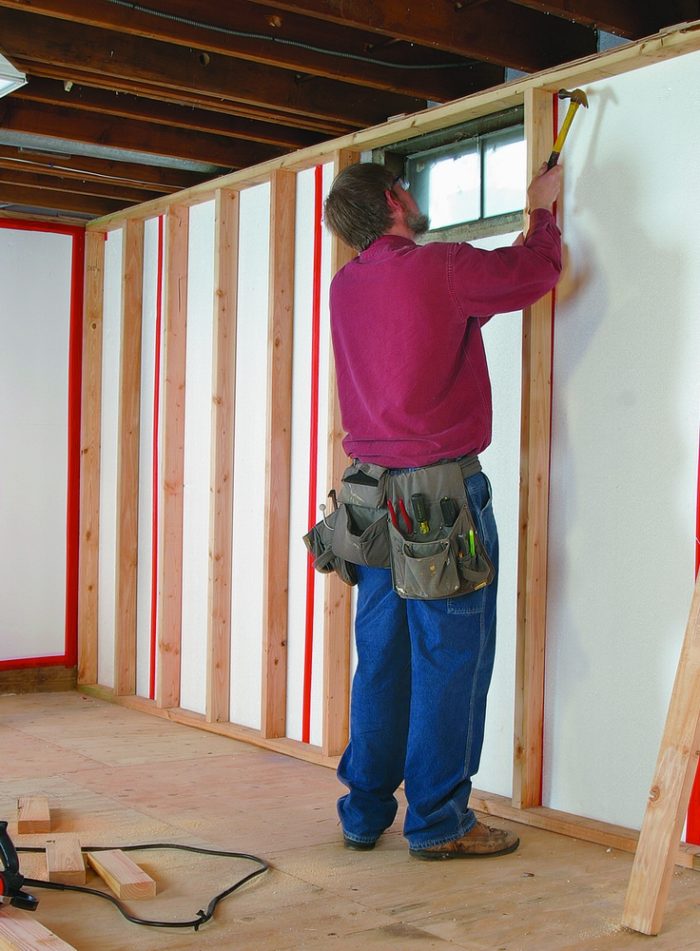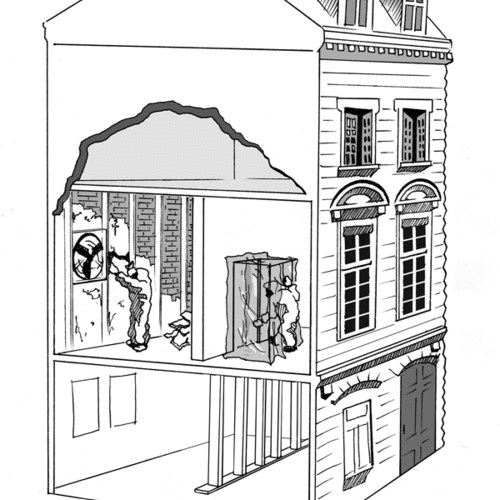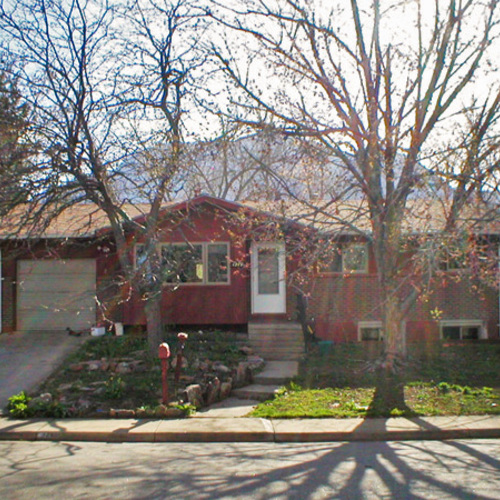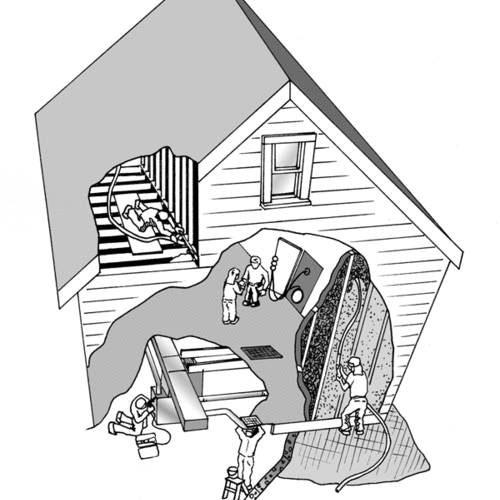Some conditions are intensified below grade
Turning an unfinished basement into additional living space is one of the least expensive ways to make a customer’s house bigger and greener. At the same time, basements pose some unique challenges in terms of air quality, natural lighting, insulation, and moisture control. In some parts the country, radon could be a problem, while in all locations, there are codes that address egress windows.
Turning an unused below-grade basement into a living space is a greener move than adding on.
By their nature, basements have inherently higher moisture levels, less natural light, and limited ventilation–all which must be overcome to turn a below grade space into a above average living area.
Codes also may require a minimum floor-to-ceiling height. Concealing overhead ducts and plumbing, or adding rigid insulation and sleepers to the floor, can made it tough to meet the standards. Other codes and considerations also apply.
Windows
Windows bring in natural light, often in short supply in a basement, but with them come energy and moisture issues. When a basement will be used as a home office, a family room or especially a bedroom, building codes typically require some means of getting in and out in an emergency. Windows used for this purpose are called egress windows, and they must meet minimum size requirements Larger windows may require wells that come with their own set of requirements.
Contaminants
This problem of radon, a naturally occurring radioactive gas, is a common one among properties in some parts of the country. But there are other potential contaminants in basements: lead, mold, creosote, pesticides, and asbestos. Removing or encapsulating these materials is important and often requires the help of a professional abatement company.
Energy efficiency
Increasing the energy efficiency of the building envelope can create a basement moisture problem where there was none before. Energy flowing through a structure tends to dry things out. A home’s moisture equilibrium can be upset when the basement is made more energy efficient and energy flows are reduced through finishing. Moisture management involves assessing gutters and downspouts, finished grade, foundation damp-proofing and perimeter drains, and whether there is free-draining fill and a capillary break (a barrier that is wide enough to prevent moisture from moving through it) beneath the slab. Some of these things can be checked by a visual inspection during a heavy rain, with moisture meters and with a plastic-sheet or calcium chloride test as described in ASTM standards.
Efficient heating and hot water
Finishing a basement doesn’t necessarily include replacing a furnace, boiler, or water heater. But older fuel-burning equipment can be a concern. Modern sealed-combustion appliances draw air from the outside into a combustion chamber that is completely separated from inside air, eliminating concerns about backdrafting. They’re also more energy efficient, usually take up less space and don’t have to be located next to a masonry chimney.A Green Basement Remodel Case Study:
OTHER CONSIDERATIONS
Building envelope
Insulate the basement floor and walls. Include a capillary break between all concrete and sill plates. Air seal and insulate rim joist areas.
HVAC
Install smoke and carbon monoxide alarms. Consider installing equipment for ventilation and humidity control.
Plumbing
Insulate the water heater and hot water pipes.
Lighting
Provide an appropriate mix of color-correct ambient and task lighting. Install energy-efficient lighting. Provide natural light.
Floors
Install hard-surface finish flooring. Avoid carpeting in high moisture areas or where spills could occur. Choose area rugs over wall-to-wall carpeting.
Walls and ceilings
Don’t use paper-faced gypsum drywall in damp areas. Limit the use of wall coverings in high moisture areas. Use low- or zero-VOC paints and finishes, sealants, caulks and adhesives.
Furniture and fittings
Choose furniture and fittings that don’t absorb moisture. Avoid cabinetry and furniture made from particleboard or medium-density fiberboard (MDF), which won’t last in damp areas. Where moisture is a problem, avoid fully upholstered furniture.
Case Study

Image Credits: Jimmy Carrion, Hoots Group/REGREEN
From unused space to green guest quarters
Carol Anne and Richard Hendrix wanted to take advantage of their unfinished basement to better accommodate their three teenagers and visits from their large extended family. The new finished basement includes a bathroom, two bedrooms, a media room, and a kitchenette. The team’s focus on high performance provided the Hendrix family with a dry, healthy, and durable finished space that requires minimal additional heating and cooling.
Design Approach

Image Credits: Jimmy Carrion, Hoots Group/REGREEN
First, air seal and insulate the rest of the house
The family wanted the new space—as well as the rest of
the home—to be energy-efficient, dry, and free of mold
and drafts. Achieving these goals cost-effectively required insulating and air sealing throughout the house before the basement renovation began and addressing moisture issues before any finish work was done. Sound dampening separated basement activity from quieter spaces upstairs.
Systems

Image Credits: Jimmy Carrion, Hoots Group/REGREEN
Key systems
Building Envelope
*Air infiltration in house reduced by 40%
*Low-e, double-glazed windows
*Band joist between basement and first floors air sealed and insulated to R-19
*Crawl-space walls air sealed and insulated to R-8
*Concrete basement walls air sealed and insulated to R-8
*Framed walls to R-13
*Attic roof insulated to R-19 and all attic vents sealed
*12-mil reinforced plastic sheeting installed for vapor barrier in crawl spaces and basement, directing water to perimeter drainpipe with two cleanouts
*Borate-treated sill plates to prevent termite damage
HVAC
*Multizone heating and cooling system, with one zone specifically
designated for basement
*Variable air volume (VAV) air handler
*Supplies and returns in each room for balanced air flow
*High-efficiency air filter
*New high-efficiency, sealed combustion, dual-fuel heat pump (replacing 20-year-old low-efficiency furnace and air-conditioner), providing 14 SEER (air conditioning), 8.5 HSPF (heat pump heating), and 96 AFUE (furnace heating) efficiencies
*Additional space conditioned using one air handler
*Low-noise bath exhaust fan with rigid metal ductwork, vented to outside
*New high-efficiency water heaters for better combustion-gas venting
Plumbing
*Low-flow fixtures
Lighting
*Fluorescent fixtures
Appliances
*Energy Star refrigerator
Lessons
If you don’t communicate, you can’t collaborate.
This project shows both how increased collaboration can engender innovative solutions and how lack of communication can result in missed opportunities: Everyone knew how the efficiency improvements would lower heating and cooling requirements, but the team missed the opportunity to use more material-efficient framing because the renovation manager purchased materials before
the rest of the team could suggest alternatives. Also, there were things that nobody thought to consider. For instance, water pipes that previously went unnoticed in the unfinished space created a noise disturbance in the new bedroom.
Team & FInances
Team and process
The Hoots Home Performance division was involved from the very beginning in planning and implementing efficiency improvements, including spraying foam insulation in the attic roof before work began in the basement. These efficiency improvements, along with switching from a single-zone HVAC system to a four-zone system and from a fixed to a variable air volume (VAV) air handler, made it possible to use a dual-fuel heat pump with only a slightly larger capacity than the furnace and air-conditioning units it replaced. Before framing and
finishing the basement, the team installed reinforced plastic sheeting on below-grade walls to act as a vapor barrier and to direct water to a perimeter drain. After the drain system and wall framing were completed, they filled the walls and floor with spray foam insulation. The two crawl spaces were also encapsulated using reinforced plastic sheeting sealed at all seams and caulked to the foundation walls, to create a complete and continuous vapor barrier. R-8 rigid-foam insulation was added to any exposed spaces without framing.
Location: Sandy Springs, Georgia
Homeowners: Carol Anne and Richard Hendrix
Contractor: Matt Hoots, The Hoots Group, Inc.
Area affected: 2,100 ft2
Finance
Recognizing that they would reap long- and short-term savings, the homeowners agreed to spend a significant amount on tightening the house envelope to reduce heating and cooling loads. Doing so allowed them to significantly reduce the size of the new heating and cooling system so that the total cost of both the efficiency improvements and the mechanical system was equivalent to what an additional system would have cost.
Team and Process
The Hoots Home Performance division was involved from the very beginning in planning and implementing efficiency improvements, including spraying foam insulation in the attic roof before work began in the basement. These efficiency improvements, along with switching from a single-zone HVAC system to a four-zone system and from a fixed to a variable air volume (VAV) air handler, made it possible to use a dual-fuel heat pump with only a slightly larger capacity than the furnace and air-conditioning units it replaced. Before framing and
finishing the basement, the team installed reinforced plastic sheeting on below-grade walls to act as a vapor barrier and to direct water to a perimeter drain. After the drain system and wall framing were completed, they filled the walls and floor with spray foam insulation. The two crawl spaces were also encapsulated using reinforced plastic sheeting sealed at all seams and caulked to the foundation walls, to create a complete and continuous vapor barrier. R-8 rigid-foam insulation was added to any exposed spaces without framing.
Location: Sandy Springs, Georgia
Homeowners: Carol Anne and Richard Hendrix
Contractor: Matt Hoots, The Hoots Group, Inc.
Area affected: 2,100 ft2
Finance
Recognizing that they would reap long- and short-term savings, the homeowners agreed to spend a significant amount on tightening the house envelope to reduce heating and cooling loads. Doing so allowed them to significantly reduce the size of the new heating and cooling system so that the total cost of both the efficiency improvements and the mechanical system was equivalent to what an additional system would have cost.
DRAWING LIBRARY CONSTRUCTION DETAILS
Green Points
LEED for Homes For gut rehab, conditioned space that also meets requirements for habitable space is counted in the floor area to determine the award thresholds. A conditioned basement (whether finished or not) may have adverse scoring implications because of the score adjustment based on home size.
NGBS-Remodel Refer to the ANSI standard and follow the appropriate path based on conditioned floor area involved in the remodeling or addition project and the year in which the original home was built. NGBS










2 Comments
Basement waterproofing
New basement waterproofing, however, is still a much needed service across the country. Both contractor mistakes and poor basement waterproofing materials lead to problems in new homes that could lead to flooding or water damage if not properly remedied.
Radiator Showroom
All of your notes about moisture are well worth noting. I recently redid my basement and moisture was our number one concern. Fortunately our walls and vapor seals seem fairly well intact, but still the room had a higher humidity than any above ground rooms. We used a combination of methods to combat this, but it was a multi-pronged effort. Underfloor heating was a major factor in raising the comfort level of the room, though we used it reluctantly, as it isn't as green as I preferred.
Log in or create an account to post a comment.
Sign up Log in